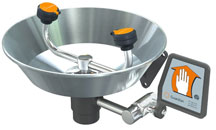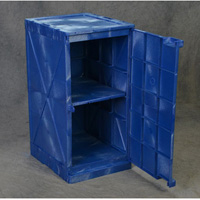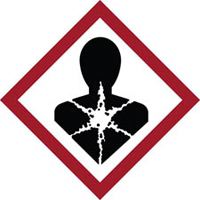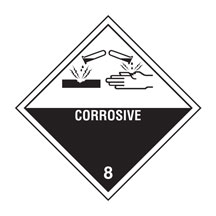| The Home page of ILPI's Safety Data Sheet (SDS) Resource, the leader in SDS information since 1995! | |
| The history and philosophy behind this resource. | |
| A curated collection of books and reference materials concerning Safety Data Sheets and closely related topics. | |
| Paste your plain text SDS into the SDS-Demystifier, and it will be converted into a hypertext-enriched document with links to detailed explanations of each key term. | |
| An extensive list of frequently asked questions about Safety Data Sheets including regulations, content, compliance, and more. | |
| A humorous take on Safety Data Sheet jargon. Fill in the blanks on our entry form to generate a personalized Unsafety Data Sheet to share with your coworkers. | |
| Since 1995, we've maintained this massive curated list of the best places to find Safety Data Sheets on the Internet. | |
| You are here! Way more than a glossary, this hypertext-enhanced resource covers hundreds of SDS-related terms and expert knowledge. Each entry includes both the SDS relevance and links to additional authoritative resources. | |
| Archived results of Safety Data Sheet related polls taken by some of our millions of site visitors | |
| The OSHA regulations behind SDS regulations, including the inspection guidelines and over 400 official interpretations letters under the Hazard Communication Standard | |
| Commercial suppliers of SDS authoring and management software as well as cloud compliance services. | |
| Commercial companies that will create SDS's for your specific needs as well as SDS translation companies. |

Safety signs, banners, and scoreboards? Get yours at Safety Emporium!
Definition
There are several definitions for acid:
- The Arrhenius definition is a substance that ionizes in water to product H+ ions.
- The Brønsted definition is a substance that is a proton (H+) donor. This does not require the substances to be in aqueous (water) solution).
- The Lewis definition is a substance that can accept a pair of electrons. This does not require a proton or aqueous solution.
There are several other definitions that go beyond the scope of this article; see Further Reading for more information. For the remainder of this article we will focus on acids in aqueous solution as that's how most of our readers will encounter them.
An acidic solution is defined as one that has a pH less than 7.0.
Additional Info
Strong acids completely dissociate (separate) into ions (negatively charged anions and positively charged cations) to form H+ in aqueous (water) solution.
"H" is the elemental symbol for the element hydrogen. A single hydrogen atom consists of a positively-charged proton and a negatively-charged electron, so H+ indicates a hydrogen atom that has lost its electron and consists only of proton. Therefore, chemists refer to H+ as a hydrogen ion and they also call it a proton.
For example, when HCl (hydrogen chloride gas) is bubbled into water, the individual molecules of HCl break up in hydrogen cations and chloride anions. We can express this behavior with the reaction equation shown below, where the single-headed arrow signifies that the reaction proceeds completely to the right (e.g. there will be no discrete HCl molecules left in the solution) and the "(aq)" indicates that the ions are dissolved in the water:
HCl → H+(aq) + Cl-(aq)
Chemists will tell you that the following equation is more correct because H+ ions actually exist as H3O+ ions (called hydronium cations) in water:
HCl + H2O → H3O+(aq) + Cl-(aq)
The actual behavior in water is far more complex, but either of the above are a convenient enough way of thinking about how acids dissociate in water.
Regardless of how you write the equations, all of the following strong acids will cause severe and immediate burns upon skin contact:
| Formula | Name |
| HClO4 | Perchloric acid |
| HI | Hydroiodic acid |
| HBr | Hydrobromic acid |
| HCl | Hydrochloric acid |
| H2SO4 | Sulfuric acid |
| HNO3 | Nitric acid |
The acids listed above are all examples of inorganic acids, sometimes called mineral acids. Mineral/inorganic acids can be strong or weak.

Safety Emporium carries all kinds of eye/face washes, safety showers, drench hoses and more.
Weak acids do not dissociate completely in solution - there is always some of the undissociated material remaining. Examples of these include acetic acid (a 5% solution of acetic acid in water is called vinegar), formic acid, ammonium cation (NH4+), and water itself. In these cases, the incomplete dissociation is indicated with a reversible equilibrium arrow as shown here for the dissolution of ammonium cation in water to produce ammonia and a hydronium ion:
H2O + NH4+ ⇋ NH3 + H3O+
The "equilibrium arrows" between the starting material (reactant) and products indicate that the reaction proceeds in both the forward and backwards directions simultaneously with all species co-existing in solution simultaneously. The relative amounts of products and reactants once the system reaches equilibrium vary from reaction to reaction and are expressed using an equilibrium constant, a topic that is beyond the scope of this text.

Organic substances with names that end in "oic acid" or "ic acid" are called carboxylic acids. Two of the examples we just mentioned, formic acid and acetic acid, are carboxylic acids. All carboxylic acids are weak acids.
The strength of acidic solutions can be measured using the pH scale. The lower the pH, the greater the acidity of a solution.
Just because an acid is weak does not mean that it can't harm you. For example, HF, hydrofluoric acid, is a weak inorganic acid. When you spill it on your hand it doesn't burn...but over the course of hours it migrates to the bones in your fingers and then begins to dissolve them from the inside out (a painful process; amputation can be required). In addition, systemic effects such as hypocalcemia can cause death. See the HF links under Further Reading below for more information.
Some common properties of acids are:
- They have a sour taste (tasting acids...or for that matter, any chemical, is not generally recommended!). For example, the citric acid in lemons and acetic acid in vinegar are responsible for the sour taste of each.
- They can react with metals such as magnesium, zinc or iron to corrode them and produce explosive hydrogen gas. Do not store acids in metal containers!
- Solutions of acids can conduct electricity
The concentration of acids can be expressed in many different ways:
- Molarity
- Percent by mass
- Degrees Baumé (indirectly)
SDS Relevance

Get your corrosion-resistant polyethylene acid storage cabinets with internal sumps from Safety Emporium.
It is important to know the pH of substances because they may be corrosive or react with incompatible materials. For example acids and bases should not be stored or used near each other as their accidental combination could generate a huge amount of heat and energy, possibly resulting in an explosion - here is a terrific example of what can happen when incompatibles are mixed!
If the substance you're working with is a liquid, the pH (if known) will be found in Section 9 (physical and chemical properties) of the Safety Data Sheet. You will also find all sorts of safety precautions, incompatibility information, physical properties, emergency information and more elsewhere on the SDS so be sure to read the sheet in its entirety.
pH is also important to know in case you spill the material on your skin or eyes. Whenever a substance enters the eye, flush with water for 15 minutes and get prompt medical attention.
Special care needs to be taken when storing acids. Minor spills and acid fumes can quickly corrode standard metal storage cabinets or soapstone countertops, for example. The best choice for storing acid containers is a chemically-resistant cabinet designed for that purpose, with polyethylene construction being the best choice for laboratory quantities of acids. Polyethylene spill trays are also a very good idea, whether acids are stored on a bench top or in a cabinet.
Further Reading

Get your GHS-compliant labels and signs from Safety Emporium.
- Chem Team has a concise discussion, explanation and hints about acids and bases as well as some more detailed stuff for chemistry students.
- Acids and bases: Frequently asked questions at Fred Senese's excellent General Chemistry Online.
- Overview of Acids and Bases at Chemistry LibreTexts™.
- Acid-Base Definitions at Ankara University details additional definitions of acid.
- Hydrofluoric Acid Safety at Portland State University.
- Recommended Medical Treatment for Hydrofluoric Acid Exposure at Honeywell. They also have other useful technical literature.
- Laboratory Safety - Hydrofluoric acid Accident Report the University of Texas at Austin.
- Fatality Due To Acute HF Exposure discusses the same accident.
- How Do I Work Safely with Corrosive Liquids and Solids? at the CCOHS.
See also: anyhdride, base, carbon dioxide, corrosive, pH
